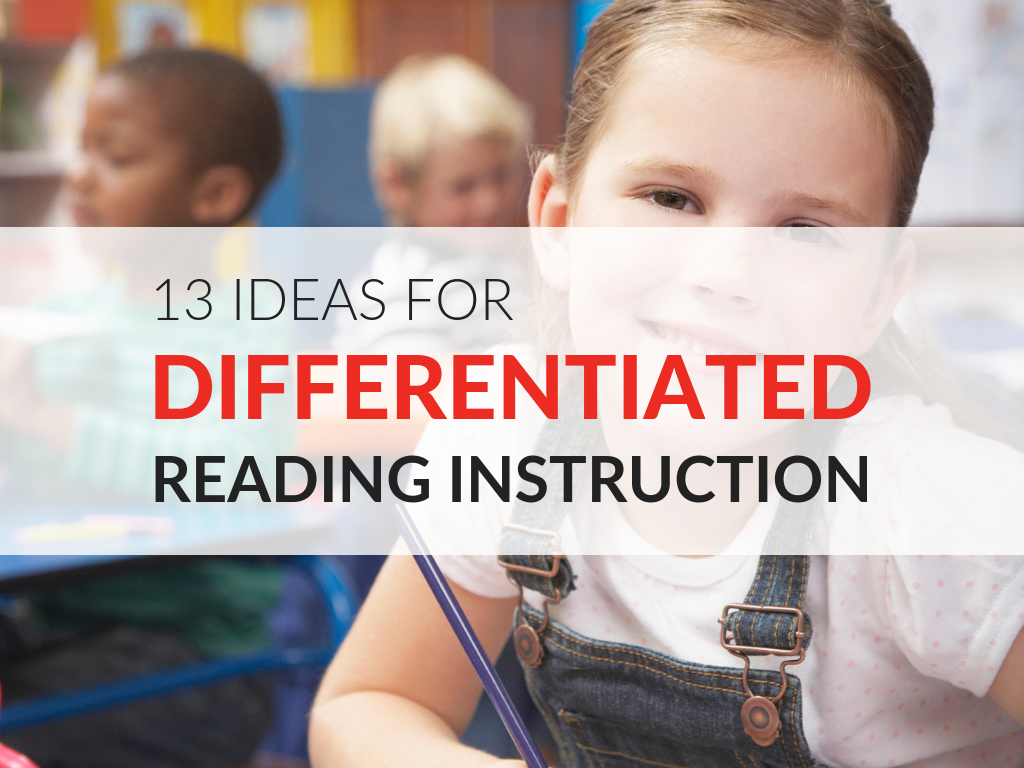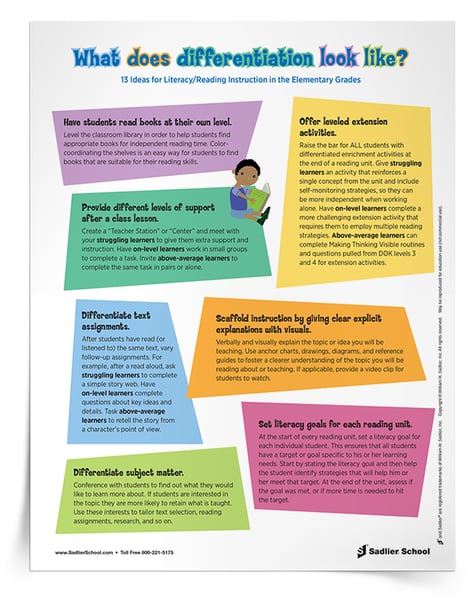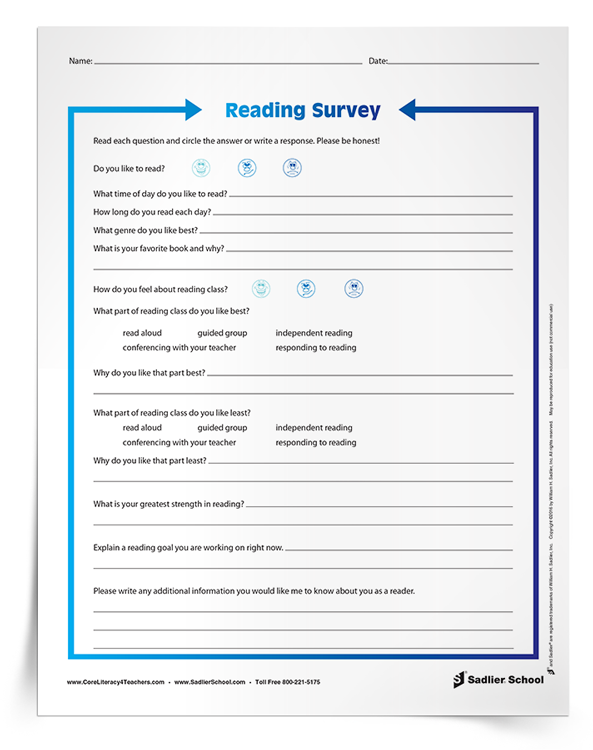October 17, 2022 ELA PD - Literacy, ELA K-5, ELA Focus - Reading, ELA 6-8, ELA Resources - Tip Sheets, Core Literacy
13 Ideas for Differentiated Reading Instruction in the Elementary Classroom
By: Erin Lynch
Differentiation has been a buzzword in education for years. As a literacy specialist, it is a critical part of my job. Differentiation is how a teacher adapts instruction to meet the specific learning needs of an individual or group of students. It means meeting the needs of all learners through differentiated instructional ideas. In this article, we’ll explore differentiated instruction in the classroom and opportunities to incorporate it into lessons. Also, available for download is a tip sheet with 13 ideas for differentiated reading instruction in the elementary classroom.
Differentiated Instruction in the Classroom
Differentiation can be applied to: the instructional approach, the subject matter, and/or to the learning environment. Differentiated lesson plans are based on learning styles and incorporate a variety of modalities in order to reach all learners. During differentiated student work time, students can work independently on a personalized goal or in small flexible groups based on interest, topic or ability.
There are endless opportunities to incorporate differentiation into your classroom!
With instruction…
Be sure to not only verbally explain the topic or idea you are instructing on, but also to have a visual. You can create an anchor chart to use as a reference guide or draw a picture/table/diagram/graph to foster a clearer understanding. If applicable, provide a video clip on the smartboard (this is a sure-fire way to engage students). Remember to always repeat what you are teaching with varying explanations. Also, tap into background knowledge for students to build upon, and pre-teach any vocabulary words that might be unfamiliar to your students.
With subject matter...
Hold conferences with students to find out what they want to learn more about. Use surveys to incorporate student interests whenever possible. If students are interested in the topic, they are more likely to retain what you are teaching them. Use inquiry-based learning to allow students to investigate areas of interest. Inquiry-based learning is also great for cross-curriculum work!
With the environment...
There are many things you can do to design a classroom that promotes learning for all students. Some examples include preferential seating and seating that allows for movement, partnerships, or small group work. Anchor charts should be displayed for students to reference. Graphic organizers and resource guides should be readily available for students to take as needed. Students should have access to technology for many reasons. Of course, one important reason is for research, but for me as a literacy specialist a very close second is to help improve a student's reading ability. There are many online resources that support students in the areas of fluency, comprehension, and vocabulary by using leveled texts with corresponding reading exercises.
You can also differentiate based on ability!
Differentiated Instruction Ideas Based on Diverse Learners
For struggling students...
Scaffold your instruction by giving clear explicit explanations with visuals. Next, practice the strategy with your students. Then have your students try it independently. Offer a variety of graphic organizers to help focus their thinking. This method of scaffolded instruction is known as the I, We, You method. Be sure to give these students self-monitoring and fix-up strategies to allow them more independence when working alone.
For average students...
Offer opportunities for small group work or partnerships (often, hearing the thoughts of peers will inspire students, and being a member of a group can motivate students to contribute to the best of their ability). These are students you want to challenge, as well, so offer extension activities when they are ready. For example, a good extension activity in reading is to rewrite the end of the book or to write about what would you like to discuss with the main character or the author.
For above average students...
Raise the bar with challenge/enrichment activities (Making Thinking Visible activity downloads, which encourage students to think more deeply about a topic or text, are great resources). Pull questions for these students from DOK levels 3 and 4.
Using Assessments to Guide Differentiation
Personally, I have found the best way to differentiate for my students is by using assessments to guide my instruction. Students need to be assessed in order to collect information about how much knowledge and skill they have acquired (assessment as a measurement tool). Students also need to be assessed so as to gauge the student's level of learning (assessment as an evaluative tool).
There are two basic types of assessments: formative and summative.
Formative assessments are assessments FOR learning and include journaling, conferring, observation, self-assessment, portfolios, and so on.
Summative assessments are assessments OF learning and include unit assessments, standardized assessments, portfolios, and so on.
Assessing students is critical for differentiation because it...
-
allows you to get to know individual readers
-
provides summaries of student learning
-
gives information about student learning progress
-
diagnoses strengths and weaknesses of an individual's learning
-
supplies direction for further learning
-
helps with goal-setting for very targeted instruction
I find the best way to differentiate for my students is to periodically set personalized goals with each student, based on formative and/or summative assessment data. I use a variety of assessments with my students to help them set these goals. Below are some resources you may find helpful in assessing individual students.
|
Revised Bloom's Taxonomy Reading Conference Forms |
|
Ideas for Differentiated Reading Instruction In the Elementary Grades
1. Have students read books at their own level.
Level the classroom library in order to help students find appropriate books for independent reading time. Color-coordinating the shelves is an easy way for students to find books that are suitable for their reading skills.
2. Provide different levels of support after a class lesson.
Create a “Teacher Station” or “Center” and meet with your struggling learners to give them extra support and instruction. Have on-level learners work in small groups to complete a task. Invite above-average learners to complete the same task in pairs or alone.
3. Differentiate text assignments.
After students have read (or listened to) the same text, vary follow-up assignments. For example, after a read aloud, ask struggling learners to complete a simple story web. Have on-level learners complete questions about key ideas and details. Task above-average learners to retell the story from a character’s point of view.
4. Scaffold instruction by giving clear explicit explanations with visuals.
Verbally and visually explain the topic or idea you will be teaching. Use anchor charts, drawings, diagrams, and reference guides to foster a clearer understanding of the topic you will be reading about or teaching. If applicable, provide a video clip for students to watch.
To get nine more differentiated reading instruction, download my What Does Differentiation Look Like? Tip Sheet now.
Conclusion
Differentiation is how a teacher adapts instruction to meet the specific learning needs of an individual learner or of a group of students. It means the instructor is meeting the needs of all learners through differentiated instructional ideas and methods. Differentiation can be applied to the instructional approach, the subject matter, and/or to the learning environment. One key approach to differentiation is individualized goal-setting based on assessment data. Use formative and summative assessment data to differentiate instruction for individuals or small groups of students.








 Reading Survey for Students
Reading Survey for Students